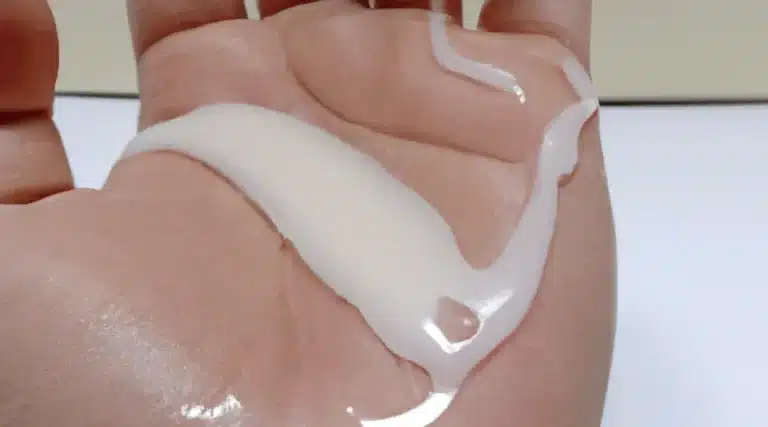Engineered wood flooring has become a popular choice for homeowners due to its durability, affordability, and aesthetic appeal. It is a composite material made up of several layers of wood, with a top layer of hardwood veneer. Unlike solid hardwood flooring, engineered wood can be installed in areas with high moisture levels and fluctuating temperatures.
When it comes to installing engineered wood flooring, there are several methods to choose from, including floating, nail-down, and glue-down. Gluing down the flooring is a secure and long-lasting method that provides a smooth and seamless finish. However, it requires careful preparation, the right adhesive, and precise installation techniques.
In this complete guide, we will take you through the step-by-step process of gluing engineered wood flooring, from preparing the surface to allowing time to dry and cure, ensuring a secure and flawless installation.
Prepare the Surface
The initial step in the preparation process involves ensuring the surface is free from any debris or contaminants that may impede the adhesive’s ability to bond to the substrate, thus promoting a durable and long-lasting flooring solution.
Moisture testing and leveling are also crucial steps in preparing the surface for gluing engineered wood flooring. Any moisture or unevenness in the subfloor can compromise the adhesive’s bond, resulting in a less secure and potentially unstable installation. It’s important to note that different types of subfloors may require different preparation methods, so it’s essential to follow the manufacturer’s instructions.
Once the surface is properly prepared, it’s time to acclimate the flooring to the room’s environment, allowing it to adjust to the temperature and humidity levels before installation. This step is critical in ensuring the stability and longevity of the flooring, providing a secure and long-lasting flooring solution.
Acclimate the Flooring
Before beginning the installation process, it is important to allow the flooring to acclimate to the room’s temperature and humidity levels for at least 48 hours, as studies show that improper acclimation can lead to up to 70% of flooring failures.
Temperature control is crucial during this process, as the flooring can expand or contract based on the room’s temperature. It is recommended to keep the room’s temperature between 60-80 degrees Fahrenheit and maintain a relative humidity level between 30-50%.
Additionally, moisture testing is essential to ensure that the subfloor is dry and within the acceptable moisture range for the specific type of flooring being installed. It is crucial to conduct this test in multiple areas of the room, as moisture levels can vary.
By properly acclimating the flooring, you can reduce the risk of installation failure and ensure a secure and long-lasting installation.
As you move onto the next section about choosing the right adhesive, it’s important to keep in mind the significance of acclimation and moisture testing in the installation process.
Choose the Right Adhesive
When it comes to choosing the right adhesive for your engineered wood flooring, there are a few key factors to consider.
Firstly, you must take into account the type of flooring and subfloor you will be working with, as certain adhesives may not be suitable for all surfaces.
Additionally, you will need to decide between water-based and solvent-based adhesives, each with their own advantages and disadvantages.
By carefully considering these factors, you can ensure that you select the adhesive that is best suited to your specific installation needs.
Consider the Type of Flooring and Subfloor
Assessing the compatibility of the type of flooring and subfloor is a crucial step in ensuring the effectiveness of the adhesive and avoiding potential issues such as warping or buckling.
Before selecting the adhesive, perform moisture testing on the subfloor to ensure that it is dry enough to begin installation.
Additionally, consider using an underlayment to provide a moisture barrier and cushioning for the flooring. The type of underlayment chosen will depend on the subfloor material and the manufacturer’s recommendations.
It is also important to consider the type of flooring being installed, as some engineered wood products may require specific adhesives. Take into account the thickness, width, and length of the planks to determine the appropriate adhesive for the job.
Finally, be aware of any special installation requirements for the flooring, such as acclimation periods or specific installation methods.
With all of these factors in mind, selecting the right adhesive for your engineered wood flooring installation can be a smooth and successful process.
When considering the next step, choose between water-based and solvent-based adhesives based on their specific properties and application requirements.
Choose Between Water-Based and Solvent-Based Adhesives
One may find themselves in a perplexing situation when choosing between water-based and solvent-based adhesives; however, with careful consideration of their specific properties and application requirements, the decision can be made with confidence.
Water-based adhesives are generally considered the more environmentally friendly option as they release fewer volatile organic compounds (VOCs) and have a lower odor. They also tend to have a longer working time, which can be advantageous for larger areas or more complex installations.
Solvent-based adhesives, on the other hand, are known for their strong and quick bond and are often preferred for high-traffic areas or heavy furniture. However, they release more VOCs and have a stronger odor, which can be problematic for those with sensitivities or allergies.
Ultimately, the choice between the two types of adhesives will depend on the specific needs and preferences of the installer. With that said, it is important to take the environmental impact into consideration when making the final decision.
Now that we’ve explored the various adhesive options, let’s move on to the next step: applying the adhesive.
Apply the Adhesive
The application of adhesive is a crucial step in the process of affixing engineered wood flooring, as it establishes a strong bond between the subfloor and the flooring materials.
Adhesive application techniques may vary depending on the type of adhesive used, but it is generally recommended to apply the adhesive using a trowel in a smooth, consistent manner. It is important to spread the adhesive evenly to avoid any air pockets or unevenness that may compromise the adhesion.
Troubleshooting adhesion issues may involve identifying any inconsistencies in the subfloor or the adhesive, and addressing them before proceeding with the installation.
Once the adhesive is applied, it is important to let it dry according to manufacturer’s instructions before installing the flooring.
By following the proper adhesive application techniques and troubleshooting any issues that may arise, the installation process can proceed smoothly and securely.
In the subsequent section about installing the flooring, the next step would be to lay the flooring boards in the adhesive, ensuring a tight fit and proper alignment.
Install the Flooring
After applying the adhesive, it’s time to move on to the actual installation process of the engineered wood flooring. Before starting, make sure you have all the necessary tools needed for the job, such as a tapping block, spacers, and a saw.
It’s important to avoid common mistakes during this stage, such as failing to stagger the planks properly or not leaving enough space for expansion. Take your time and ensure that each plank is securely in place before moving on to the next one.
Once the installation is complete, it’s important to clean up any excess adhesive or debris left behind.
Clean Up
To ensure a polished finish and avoid any tripping hazards, tidying up excess debris and adhesive is an essential step in the flooring process.
Start by using a vacuum to remove any dust or debris left on the flooring surface. Then, use a damp cloth or mop to clean the floor thoroughly. Be sure to avoid using too much water, as excess moisture can damage the flooring.
When cleaning the floor, pay close attention to any areas where glue may have seeped out from between the planks. Use a putty knife to carefully remove any excess adhesive, being careful not to damage the surrounding flooring.
Once all debris and adhesive has been removed, allow time for the flooring to dry completely before proceeding to the next step.
When it comes to cleaning products, it’s important to choose the right ones to avoid damaging the flooring. Avoid using harsh chemicals or abrasive cleaning tools. Instead, opt for a cleaning solution specifically formulated for engineered wood flooring.
As far as tools needed for clean up, a vacuum, mop, damp cloth, and putty knife should be sufficient.
With a clean and debris-free surface, the next step is to allow time for the adhesive to dry and cure properly.
Allow Time to Dry and Cure
Proper drying and curing of the adhesive is crucial for achieving a durable and stable floor, akin to how allowing a cake batter to rest and rise before baking results in a perfectly baked cake.
It is important to allow enough time for the adhesive to dry and cure before walking on the newly installed engineered wood flooring. This typically takes around 24 hours, but it is recommended to wait for 48 hours to be safe.
Adequate ventilation is also important during the drying and curing process to ensure that the adhesive can fully cure and create a strong bond.
Additionally, it is recommended to test the adhesive strength before installing the flooring to ensure that it can hold up to the weight and foot traffic of daily use.
By taking the time to properly dry and cure the adhesive, and testing its strength beforehand, you can ensure a secure installation and a long-lasting, beautiful floor.
Conclusion
In conclusion, gluing engineered wood flooring is a secure and reliable installation method that requires careful preparation, the right adhesive, and sufficient drying and curing time.
By following the steps outlined in this guide, homeowners can ensure a successful and long-lasting installation that enhances the beauty and value of their homes.
However, it is worth noting that gluing is not the only option for installing engineered wood flooring. Other methods, such as floating and nail-down, may be more appropriate depending on the specific circumstances, such as the type of subfloor and the location of the installation.
Therefore, it is important to consider all the factors and consult with a professional before making a decision.
Ultimately, the goal is to create a functional and aesthetically pleasing space that meets the needs and preferences of the homeowners.



